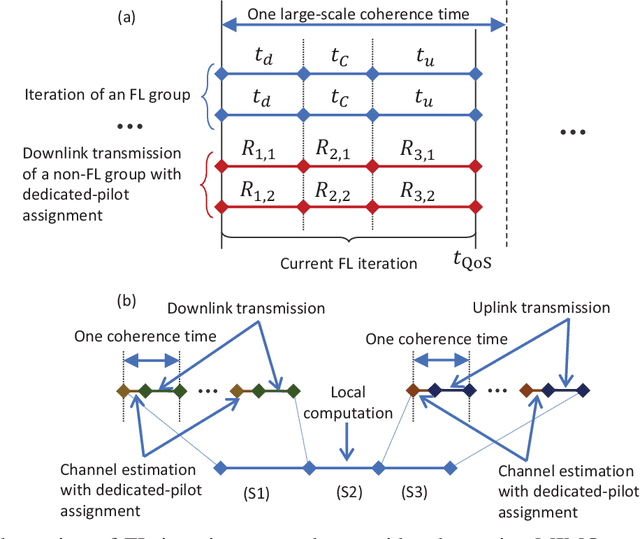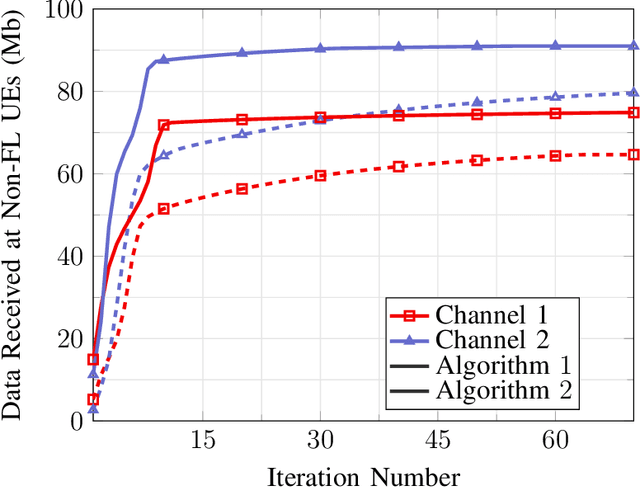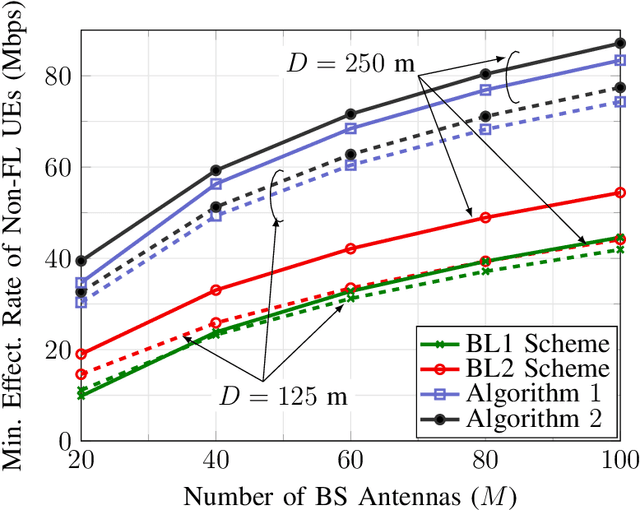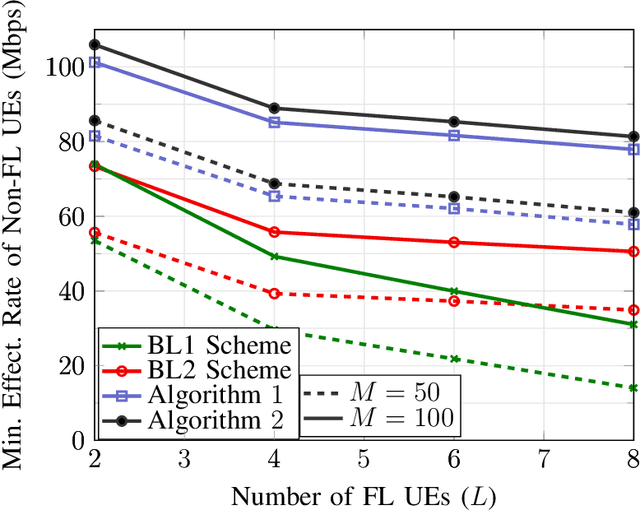Tung Thanh Vu
Cell-Free Massive MIMO with Multi-Antenna Users and Phase Misalignments: A Novel Partially Coherent Transmission Framework
Mar 01, 2024Abstract:Cell-free massive multiple-input multiple-output (MIMO) is a promising technology for next-generation communication systems. This work proposes a novel partially coherent (PC) transmission framework to cope with the challenge of phase misalignment among the access points (APs), which is important for unlocking the full potential of cell-free massive MIMO technology. With the PC operation, the APs are only required to be phase-aligned within clusters. Each cluster transmits the same data stream towards each user equipment (UE), while different clusters send different data streams. We first propose a novel algorithm to group APs into clusters such that the distance between two APs is always smaller than a reference distance ensuring the phase alignment of these APs. Then, we propose new algorithms that optimize the combining at UEs and precoding at APs to maximize the downlink sum data rates. We also propose a novel algorithm for data stream allocation to further improve the sum data rate of the PC operation. Numerical results show that the PC operation using the proposed framework with a sufficiently small reference distance can offer a sum rate close to the sum rate of the ideal fully coherent (FC) operation that requires network-wide phase alignment. This demonstrates the potential of PC operation in practical deployments of cell-free massive MIMO networks.
Joint User Association and Power Control for Cell-Free Massive MIMO
Jan 05, 2024Abstract:This work proposes novel approaches that jointly design user equipment (UE) association and power control (PC) in a downlink user-centric cell-free massive multiple-input multiple-output (CFmMIMO) network, where each UE is only served by a set of access points (APs) for reducing the fronthaul signalling and computational complexity. In order to maximize the sum spectral efficiency (SE) of the UEs, we formulate a mixed-integer nonconvex optimization problem under constraints on the per-AP transmit power, quality-of-service rate requirements, maximum fronthaul signalling load, and maximum number of UEs served by each AP. In order to solve the formulated problem efficiently, we propose two different schemes according to the different sizes of the CFmMIMO systems. For small-scale CFmMIMO systems, we present a successive convex approximation (SCA) method to obtain a stationary solution and also develop a learning-based method (JointCFNet) to reduce the computational complexity. For large-scale CFmMIMO systems, we propose a low-complexity suboptimal algorithm using accelerated projected gradient (APG) techniques. Numerical results show that our JointCFNet can yield similar performance and significantly decrease the run time compared with the SCA algorithm in small-scale systems. The presented APG approach is confirmed to run much faster than the SCA algorithm in the large-scale system while obtaining an SE performance close to that of the SCA approach. Moreover, the median sum SE of the APG method is up to about 2.8 fold higher than that of the heuristic baseline scheme.
Massive MIMO for Serving Federated Learning and Non-Federated Learning Users
May 21, 2022



Abstract:With its privacy preservation and communication efficiency, federated learning (FL) has emerged as a promising learning framework for beyond 5G wireless networks. It is anticipated that future wireless networks will jointly serve both FL and downlink non-FL user groups in the same time-frequency resource. While in the downlink of each FL iteration, both groups jointly receive data from the base station in the same time-frequency resource, the uplink of each FL iteration requires bidirectional communication to support uplink transmission for FL users and downlink transmission for non-FL users. To overcome this challenge, we present half-duplex (HD) and full-duplex (FD) communication schemes to serve both groups. More specifically, we adopt the massive multiple-input multiple-output technology and aim to maximize the minimum effective rate of non-FL users under a quality of service (QoS) latency constraint for FL users. Since the formulated problem is highly nonconvex, we propose a power control algorithm based on successive convex approximation to find a stationary solution. Numerical results show that the proposed solutions perform significantly better than the considered baselines schemes. Moreover, the FD-based scheme outperforms the HD-based scheme in scenarios where the self-interference is small or moderate and/or the size of FL model updates is large.
 Add to Chrome
Add to Chrome Add to Firefox
Add to Firefox Add to Edge
Add to Edge